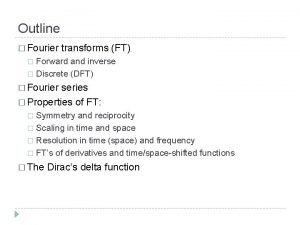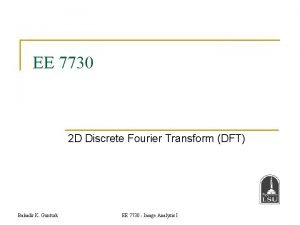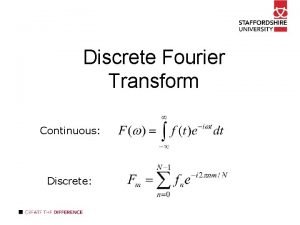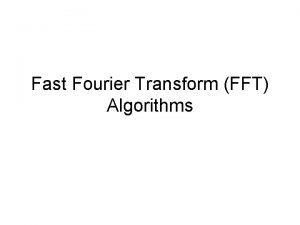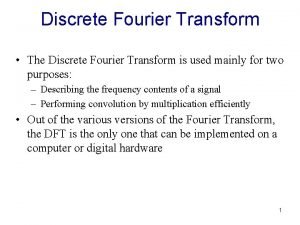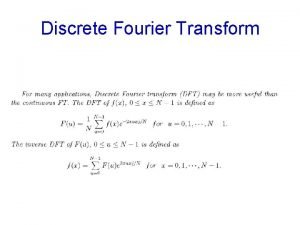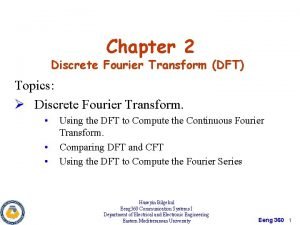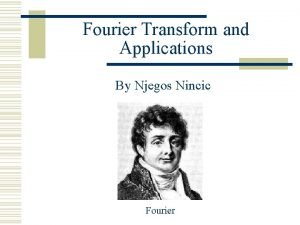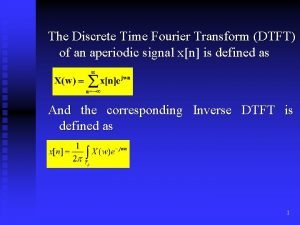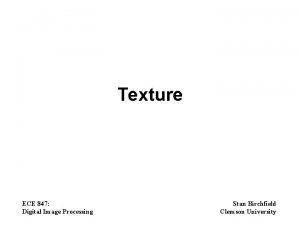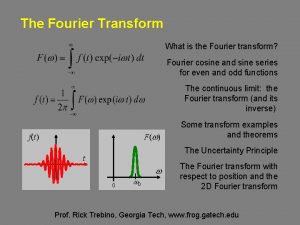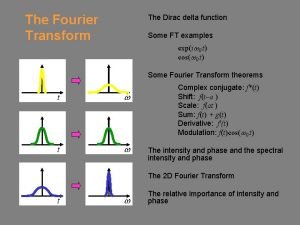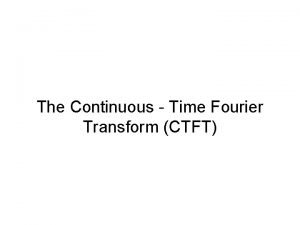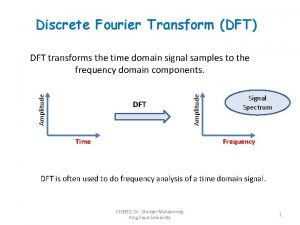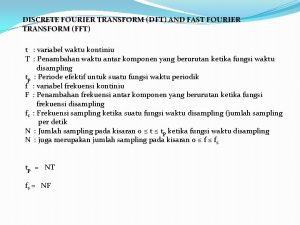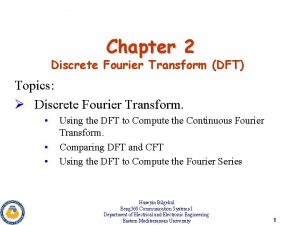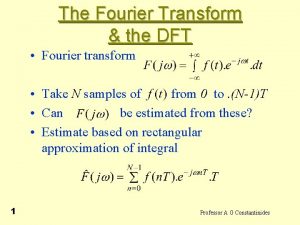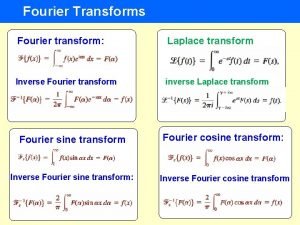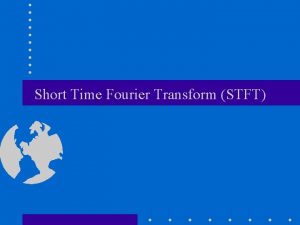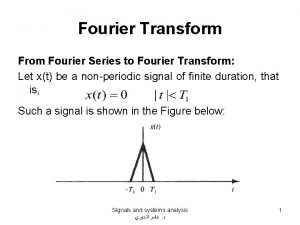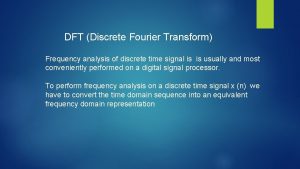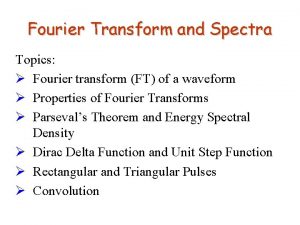Chapter 2 Discrete Fourier Transform DFT Topics Discrete












- Slides: 12

Chapter 2 Discrete Fourier Transform (DFT) Topics: Ø Discrete Fourier Transform. • • • Using the DFT to Compute the Continuous Fourier Transform. Comparing DFT and CFT Using the DFT to Compute the Fourier Series Huseyin Bilgekul Eeng 360 Communication Systems I Department of Electrical and Electronic Engineering Eastern Mediterranean University Eeng 360 1

Discrete Fourier Transform (DFT) ØDefinition: The Discrete Fourier Transform (DFT) is defined by: Where n = 0, 1, 2, …. , N-1 The Inverse Discrete Fourier Transform (IDFT) is defined by: where k = 0, 1, 2, …. , N-1. The Fast Fourier Transform (FFT) is a fast algorithm for evaluating the DFT. Eeng 360 2

Using the DFT to Compute the Continuous Fourier Transform Ø Suppose the CFT of a waveform w(t) is to be evaluated using DFT. 1. The time waveform is first windowed (truncated) over the interval (0, T) so that only a finite number of samples, N, are needed. The windowed waveform ww(t) is 2. The Fourier transform of the windowed waveform is 3. Now we approximate the CFT by using a finite series to represent the integral, ∆t = T/N , t = k∆t, f = n/T, dt = ∆t Eeng 360 3

Computing CFT Using DFT • We obtain the relation between the CFT and DFT; that is, f = n/T and ∆t = T/N • The sample values used in the DFT computation are x(k) = w(k∆t), • If the spectrum is desired for negative frequencies – the computer returns X(n) for the positive n values of 0, 1, …, N-1 – It must be modified to give spectral values over the entire fundamental range of -fs/2 < f <fs/2. For positive frequencies we use For Negative Frequencies Eeng 360 4

Comparison of DFT and the Continuous Fourier Transform (CFT) Relationship between the DFT and the CFT involves three concepts: • Windowing, • Sampling, • Periodic sample generation Eeng 360 5

Comparison of DFT and the Continuous Fourier Transform (CFT) Relationship between the DFT and the CFT involves three concepts: • Windowing, • Sampling, • Periodic sample generation Eeng 360 6

Eeng 360 7

Using the DFT to Compute the Fourier Series Ø The Discrete Fourier Transform (DFT) may also be used to compute the complex Fourier series. Ø Fourier series coefficients are related to DFT by, Ø Block diagram depicts the sequence of operations involved in approximating the FT with the DTFs. Eeng 360 8

Ex. 2. 17 Use DFT to compute the spectrum of a Sinusoid Eeng 360 9

Ex. 2. 17 Use DFT to compute the spectrum of a Sinusoid Spectrum of a sinusoid obtained by using the MATLAB DFT. Eeng 360 10

Using the DFT to Compute the Fourier Series The DTFT and length-N DTFS of a 32 -point cosine. The dashed line denotes the CFT. While the stems represent N|X[k]|. (a) N = 32 (b) N = 60 (c) N = 120. Eeng 360 11

Using the DFT to Compute the Fourier Series The DTFS approximation to the FT of x(t) = cos(2 (0. 4)t) + cos(2 (0. 45)t). The stems denote |Y[k]|, while the solid lines denote CFT. (a) M = 40. (b) M = 2000. (c) Behavior in the vicinity of the sinusoidal frequencies for M = 2000. (d) Behavior in the vicinity of the sinusoidal frequencies for M = 2010 Eeng 360 12
 Discrete fourier transform of delta function
Discrete fourier transform of delta function Ee
Ee Discrete fourier transform
Discrete fourier transform Discrete fourier transform formula
Discrete fourier transform formula Discrete time fourier series
Discrete time fourier series Discrete fourier transform
Discrete fourier transform Discrete fourier transform
Discrete fourier transform Application of discrete fourier transform
Application of discrete fourier transform Dtft symmetry property
Dtft symmetry property Discrete fourier transform formula
Discrete fourier transform formula Sinc to rect
Sinc to rect Dirac delta function
Dirac delta function Ctfs ctft
Ctfs ctft
